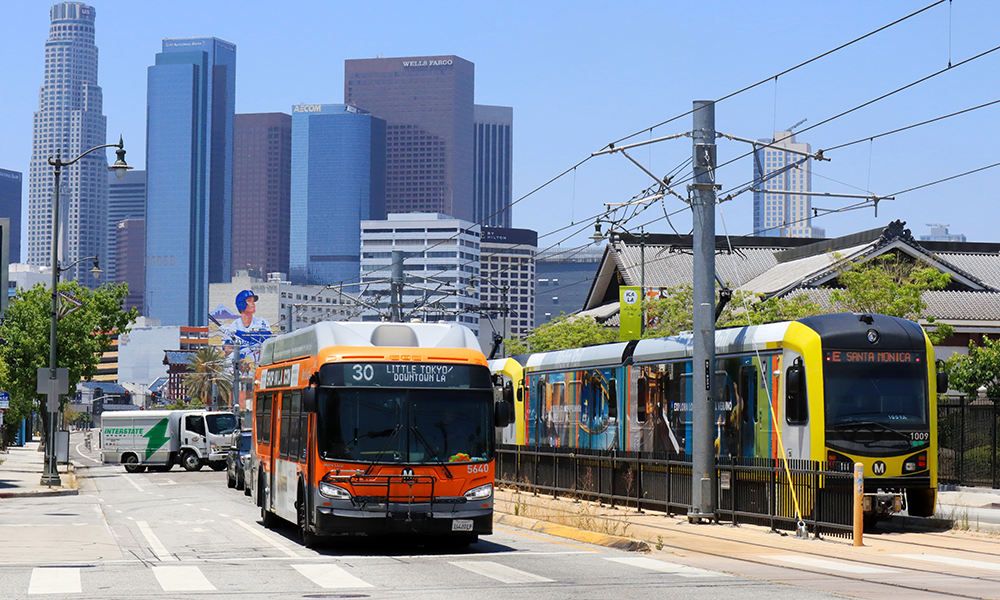In the wake of the January fires—and with major infrastructure projects underway ahead of the 2028 Summer Olympics—this year’s LABarometer Mobility & Sustainability survey arrives at a pivotal moment. Angelenos weigh in on public transit, climate resilience, and the Olympics.
From February 19 to April 27, 2025—just weeks after the January 2025 wildfires burned more than 50,000 acres across Los Angeles County—our LABarometer team surveyed 1,370 L.A. County residents as part of the fifth wave of our Mobility & Sustainability survey. As in previous waves, we asked residents about their transportation behaviors, perceptions, and climate-related experiences, while also introducing new questions about their hopes and concerns for the 2028 Summer Olympics. Around public transit, signs of progress emerge, yet other familiar trends persist.
Here are the key findings from our survey:
1. A small but meaningful uptick in Metro use—but bus use remains stagnant.
While Metro ridership has yet to return to pre-pandemic levels, we continue to see small increases in ridership year to year, including a two-percentage point increase since our last survey wave. This aligns with LA Metro’s recent reporting of increasing ridership on its bus and rail lines respectively. Rail expansions like the 2023 Regional Connector have likely contributed to this change—the E line alone experienced an almost 17% increase in ridership since January 2024, according to LA Metro.
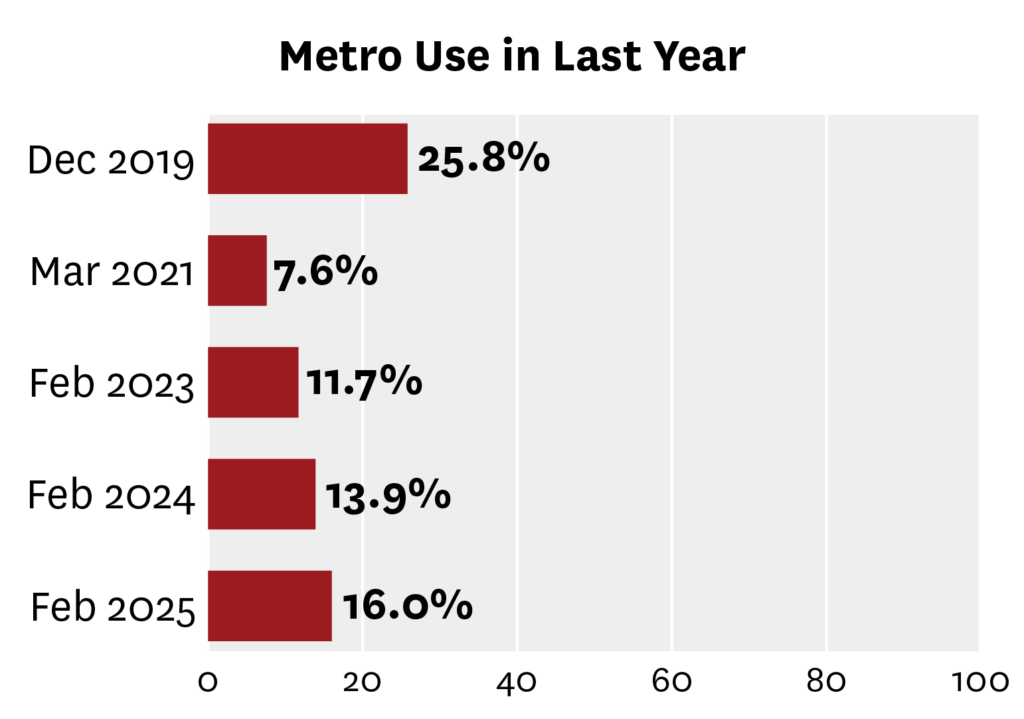
And yet, we do not see a significant increase in bus use among our respondents. Since 2023, bus use–defined here as riding the bus at least once in the last year–has remained stagnant, at about 70% the level observed pre-pandemic in 2019. This finding was unexpected given LA Metro’s reporting of increased bus ridership levels, but it may point to two competing ridership trends: (1) increasing bus use among high-frequency users and (2) continued hesitancy among pre-pandemic occasional users, which we explored in greater depth in last year’s report.
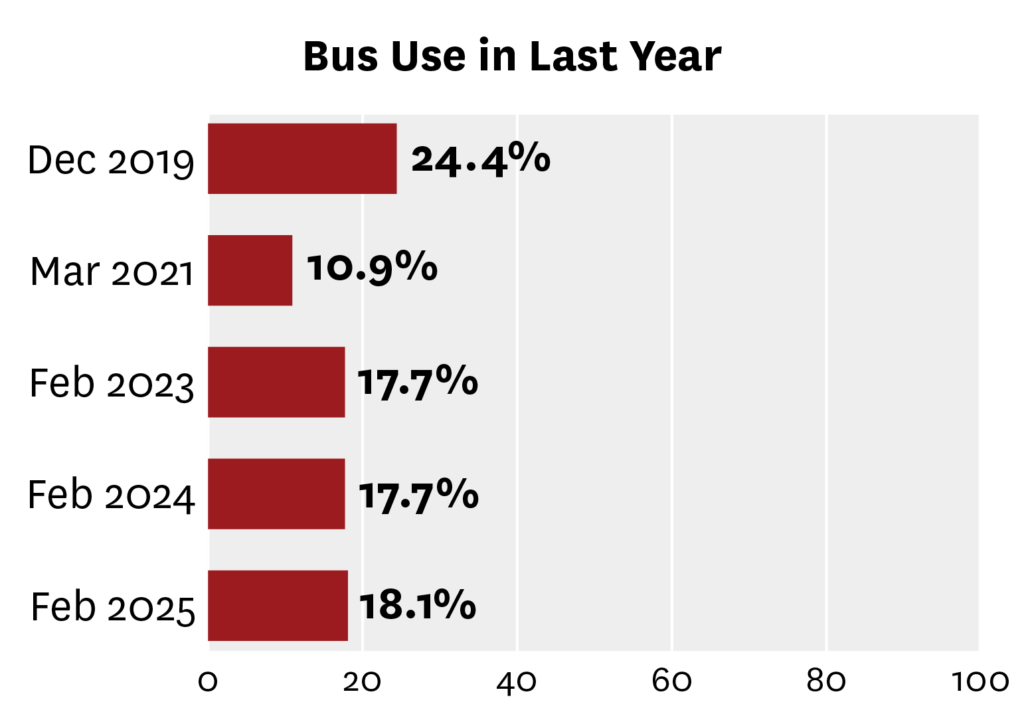
2. Perceptions of public transit safety are improving.
Good news: Angelenos feel safer riding the bus and metro than they did a year ago. In 2024, 21% of respondents rated the bus as somewhat to very safe and 16% rated the metro as somewhat to very safe; in 2025, those percentages jumped to 26% and 19%, respectively.
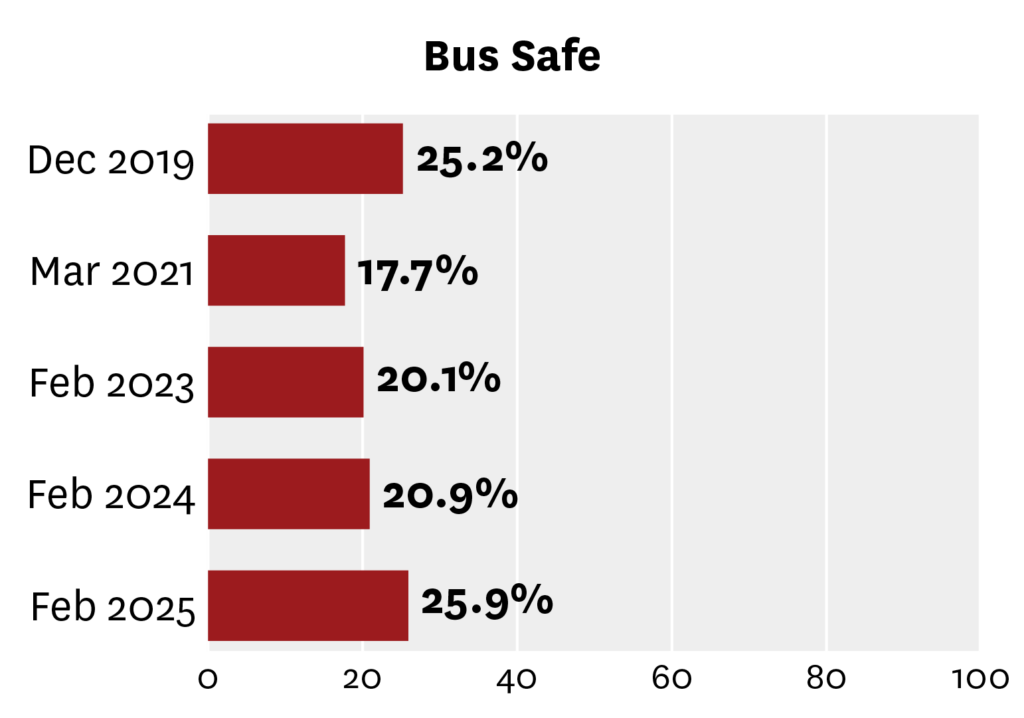
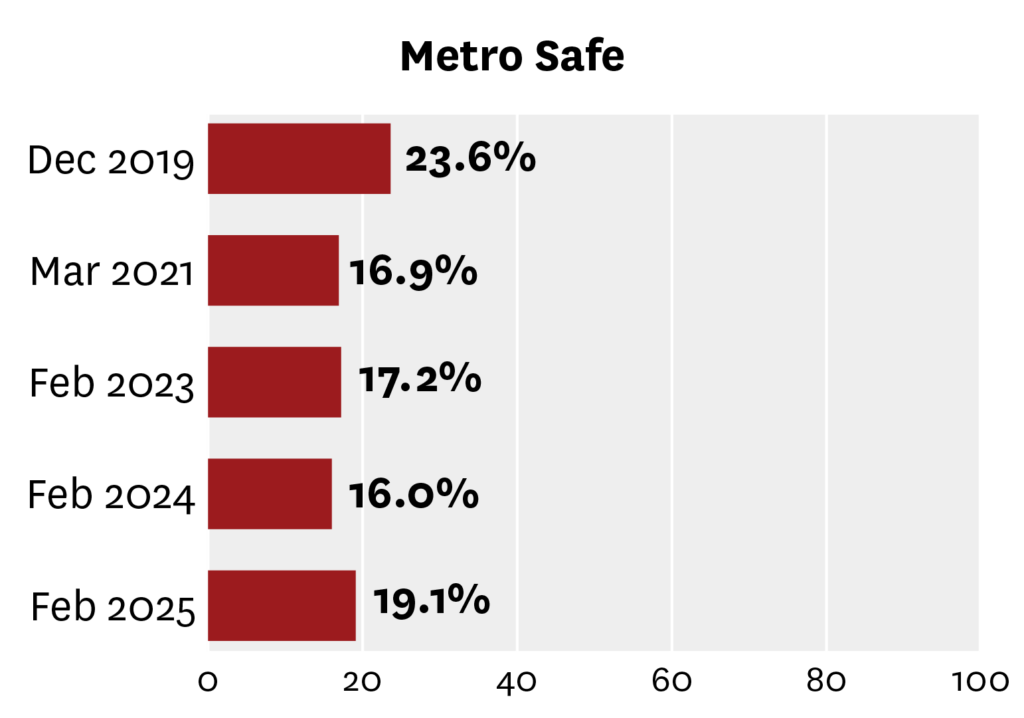
These increases may be a sign that recent public safety enhancements are easing fear of crime on public transit. They may also reflect recent crime trends. Since 2023, Los Angeles has seen a 14% decrease in homicide and a 9% decrease in violent crimes.
3. Fewer Angelenos say their next car will be electric or hybrid.
Despite decades-long environmental initiatives and the increased presence of electric vehicles in Los Angeles, the proportion of residents who expect their next car to be electric/hybrid fell 9% this year. This tracks with the larger statewide trend; Tesla, considered by many to be the figurehead of electric vehicles, underperformed their quarterly sales by almost 25% this year. Recent reporting also suggests that the Tesla brand may have taken on new political meaning since the 2024 election.
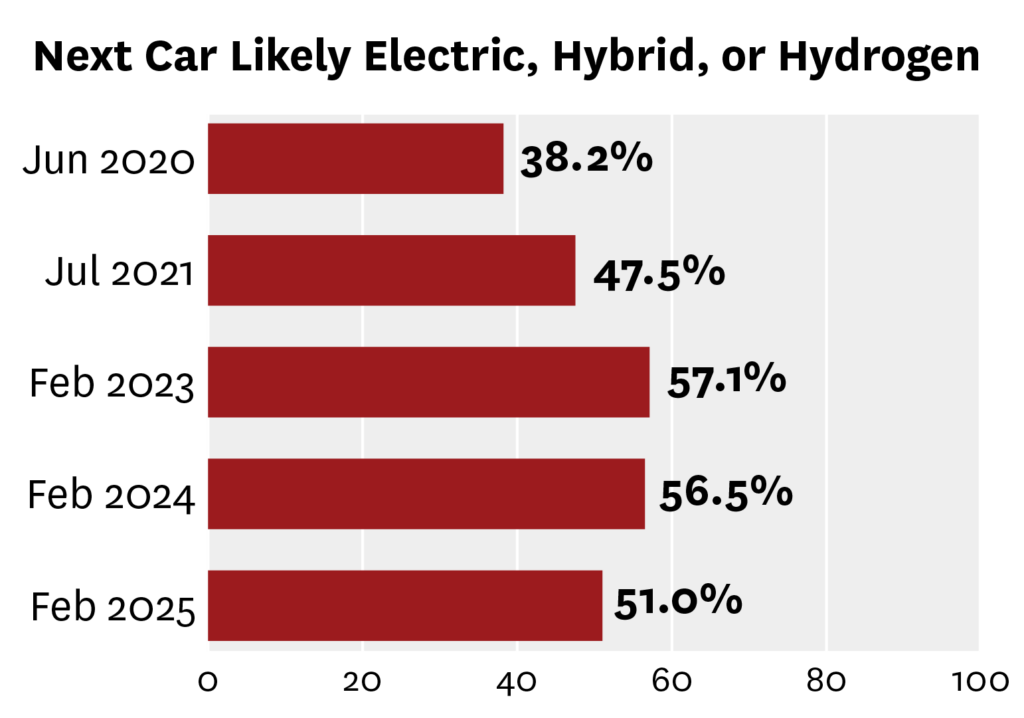
4. Wildfires are a part of life in L.A.
Over half of L.A. County residents avoided going outside due to wildfire smoke this past year—an extraordinary number, and yet not unprecedented. When we look at the trend over time, we see a similar share of residents who report staying indoors due to wildfire smoke in our 2021 survey—likely in response to the Bobcat Fire, which burned over 115,000 acres in L.A. County in the fall of 2020.
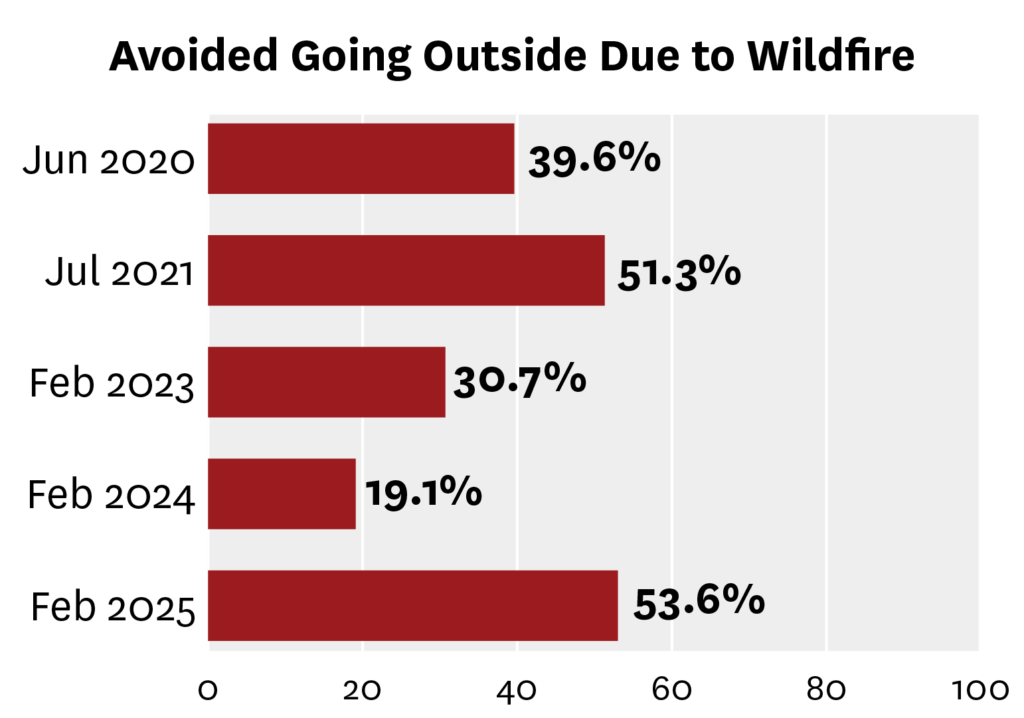
We also see that rates of disaster-related psychological distress were relatively similar in our 2025, 2023, and 2021 surveys. This year, 32% of respondents reported symptoms of psychological distress due to wildfire. In 2023, the rate was 26% and in 2021 the rate was 28%.
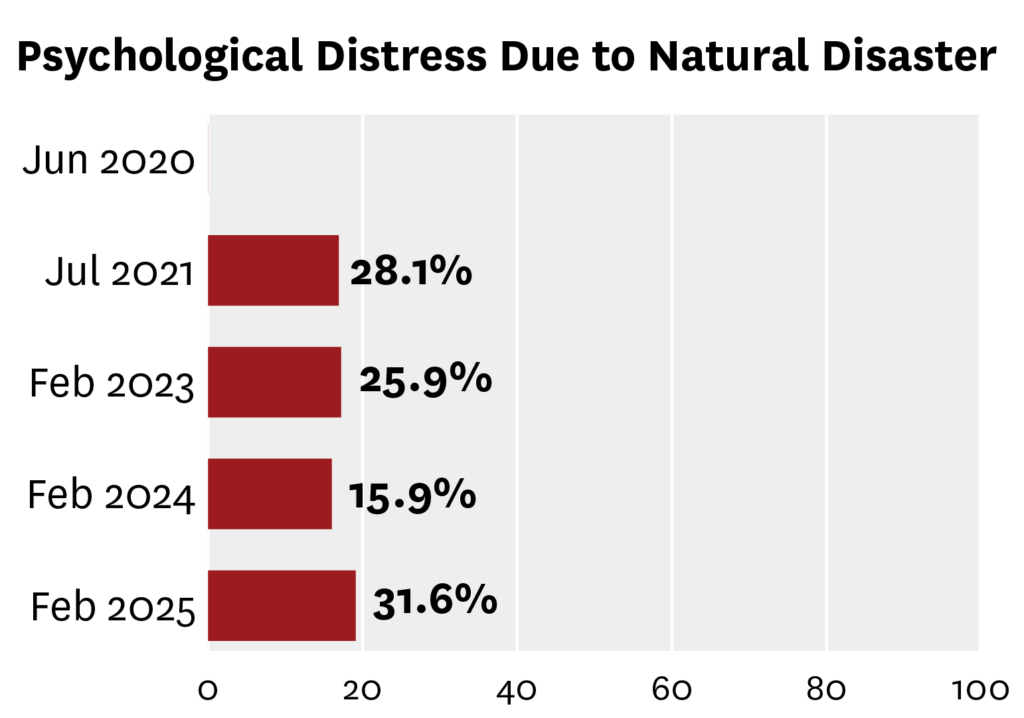
These comparisons underscore how common wildfire-related behavioral and psychological impacts have become in L.A. For Palisades and Altadena residents, the January wildfires of 2025 were especially destructive, but for L.A. writ-large, even a fire season as catastrophic as the one we just experienced is no longer anomalous in terms of its population impact.
5. In the aftermath of the January fires—no shift in climate attitudes or disaster preparedness.
Despite the scale of the January wildfires, we see no significant changes in attitudes toward climate change or levels of disaster preparedness. In this year’s survey, 71% of Angelenos agreed and 29% disagreed that climate change is a threat to the well-being of L.A. County residents, which is broadly in line with previous years. Only 40% reported being moderately prepared for a natural disaster, again on par with previous years.
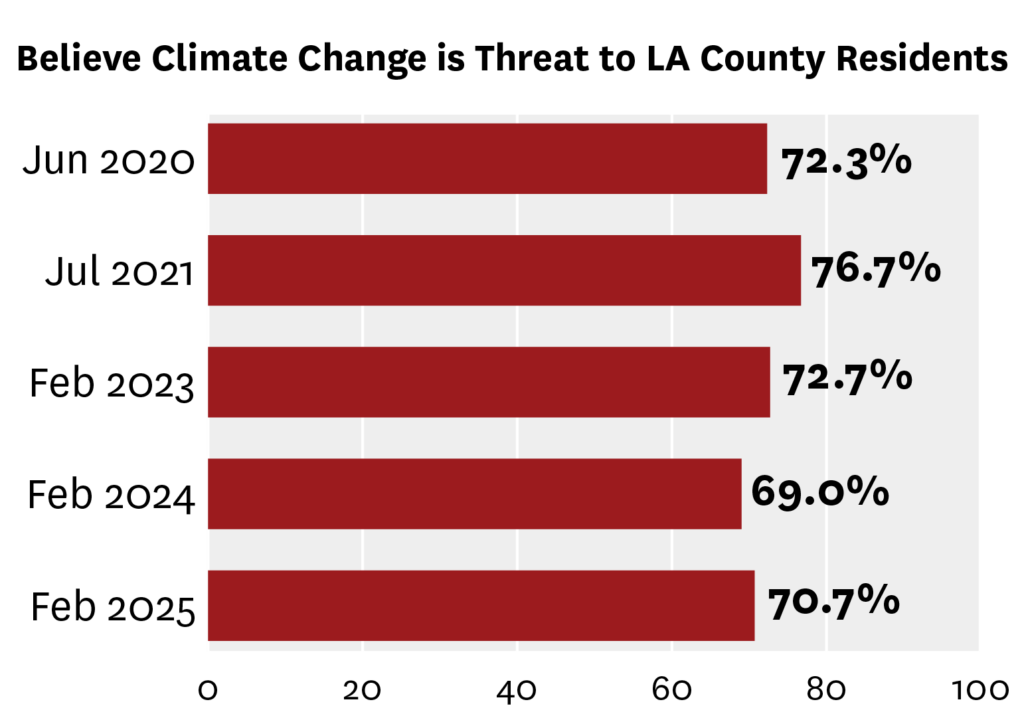
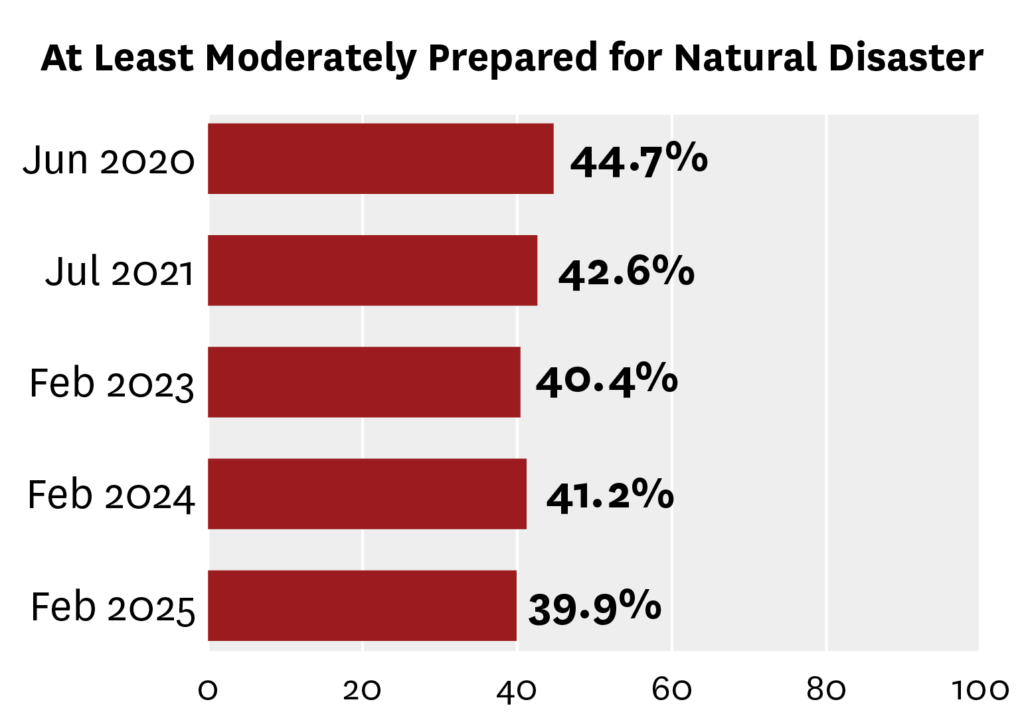
This may reflect a saturation point in public concern—climate risks are widely acknowledged but not necessarily leading to new behaviors or planning. It also suggests that high-impact events alone may not be sufficient to shift public attitudes or spur an increase in preparedness.
6. Angelenos are divided on the 2028 Olympics—and doubtful about transit readiness.
Just over half (53%) of LA County residents say they are looking forward to the 2028 Summer Olympics. Among the 47% who are not, concerns about transportation loom large. “Traffic” was by far the most frequently cited concern.

Furthermore, when asked to rate the preparedness of L.A.’s public transit system for the 2028 Summer Olympics, 39% of respondents selected “not at all prepared” and 33% selected “slightly prepared.” As L.A. prepares to host on the world stage, residents remain unconvinced that its transportation system is up to the task.
Learn more
To learn more about mobility and sustainability issues in L.A., check out our tracking report, topline, or visit our website. You can also join our mailing list to receive LABarometer newsletters and survey updates.
